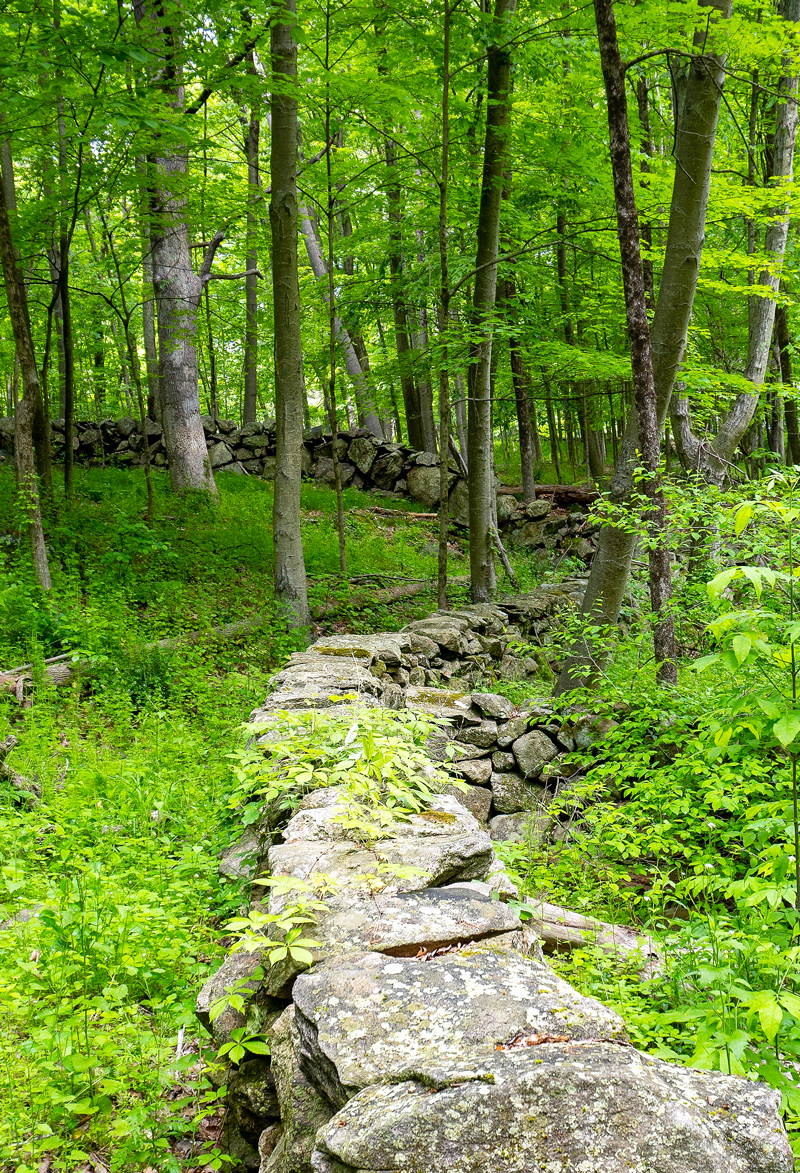Humans have created walls, henges, cairns, and other stone structures since prehistoric times. These structures have served a variety of purposes, from defensive barriers to waymarkers and religious sites. And while many of the most famous stone walls are found in Europe, the United States is also home to a fascinating array of centuries-old walls. Though their purpose was often simple — to demarcate land used for agricultural or residential purposes — the methods used to construct them were ahead of their time. Their ubiquity gives them a cultural significance within this region, too. Discover the fascinating history of New England’s stone walls and how to visit them for yourself.
The Role of European Settlers

The earliest stone walls date from Neolithic times, and they’re a feature you’ll see in many European countries today. For example, they’re abundant in Ireland, Scotland, and northern England, as well as throughout the Mediterranean region.
In fact, they’re such an important part of the local landscape that UNESCO inscribed the craft of dry stone walling on its Intangible Cultural Heritage list in 2018. The method involves large stones being laid on a bed of gravel. A wall of stones is carefully constructed on top that tapers slightly as it rises from the ground. Smaller stones called filling stones are used in the gaps, while through stones placed perpendicular to the wall also help to keep it stable. Finally, flat rocks known as coping stones are placed on top.
When Europeans migrated to North America beginning in the 17th century, many of them intended to farm and brought livestock with them. To keep their crops and animals separate, they needed to erect some kind of barrier. They did so in the way they knew how, and dry stone walls sprang up in the U.S. as a consequence. New England had an especially large number, thanks to a combination of the right kind of rock, glacial soils, and a prevalence of small family farms.
New England’s Stone Walls: A Microcosm of Time
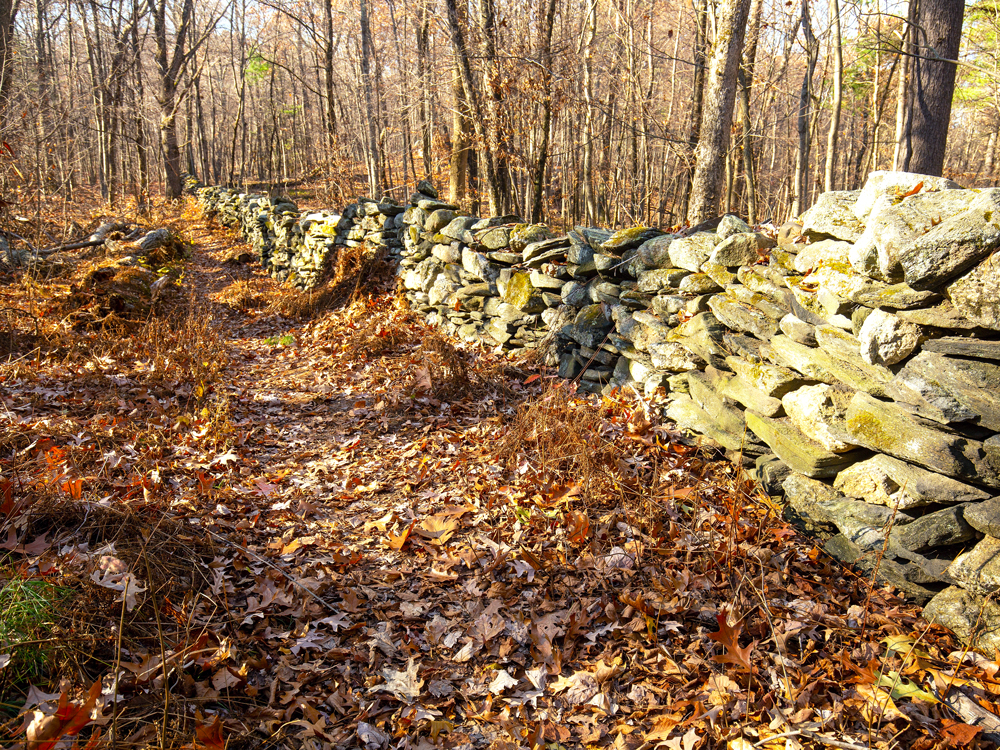
Fieldstone walls encapsulate the history of New England. Thousands of years ago, glaciers advanced and then retreated, depositing their rocky moraine throughout the region. Forests grew and then were cut back to make space for farming, and those same stones were cleared and stacked to demarcate fields and clarify boundaries.
Though many remain standing today, the stone walls that were lost to history are gradually being rediscovered through the use of techniques such as light and detection ranging (LIDAR) and geographic information science (GIS). In the 1930s, mining engineer Oliver Bowles suggested that the region’s total could have been as much as 240,000 miles of walls, though mapping is still a work in progress.
Time Takes Its Toll
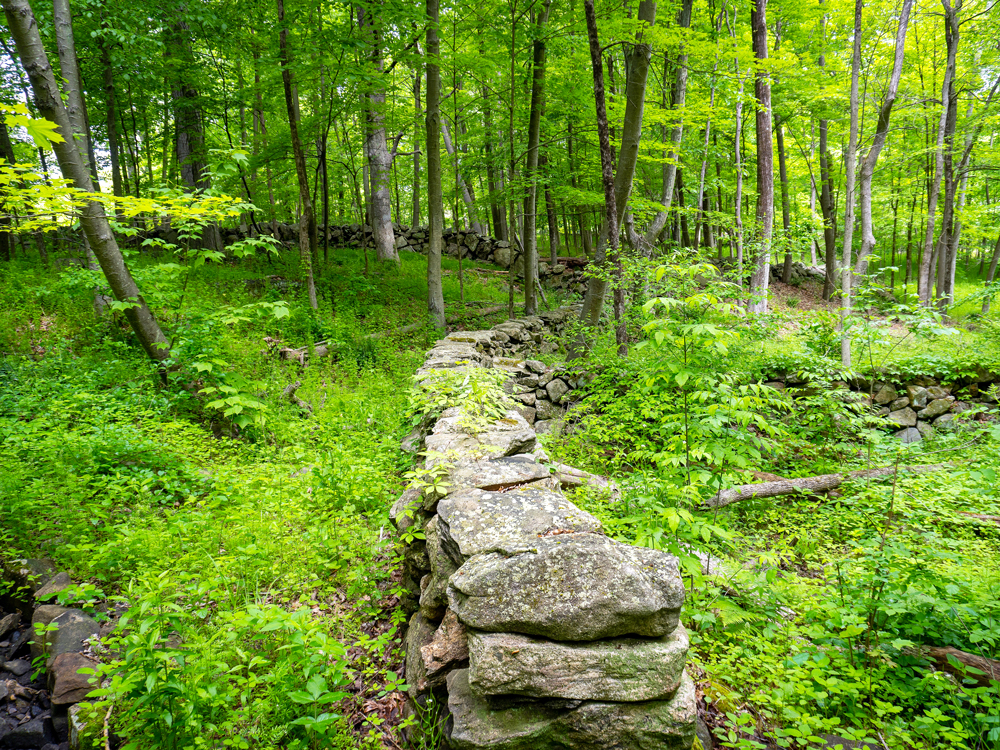
The building of dry stone walls reached its peak between 1750 and 1850, but times changed. As the nation industrialized and cities grew, rural land holdings were abandoned. Without people to maintain them, some stone walls were simply left to collapse, as there was no longer anyone around who knew how to make repairs. Vegetation cleaved and scattered the stone, while woodland recolonized what had once been pasture or plowed furrows.
Other walls fell victim to plunder, the stones repurposed in other structures. In Stamford, Connecticut, there are records of a purchase of a portable stone crusher in 1909 so that the material from redundant walls could form the base layer of new roads. A 1914 article in the magazine Guide to Nature lamented the loss of some of these “picturesque stone walls” but also argued that “a few stone walls go a long way in making enduring roads.”
However, more recently, an appreciation has taken root for the cultural value of these once unremarkable stone walls and the contribution they make to an area’s architectural heritage. For instance, the Stone Wall Initiative, coordinated by Robert M. Thorson, professor of earth sciences at the University of Connecticut, has been established to help catalog and preserve this unique characteristic of the New England landscape.
Where Can You Find New England’s Stone Walls?
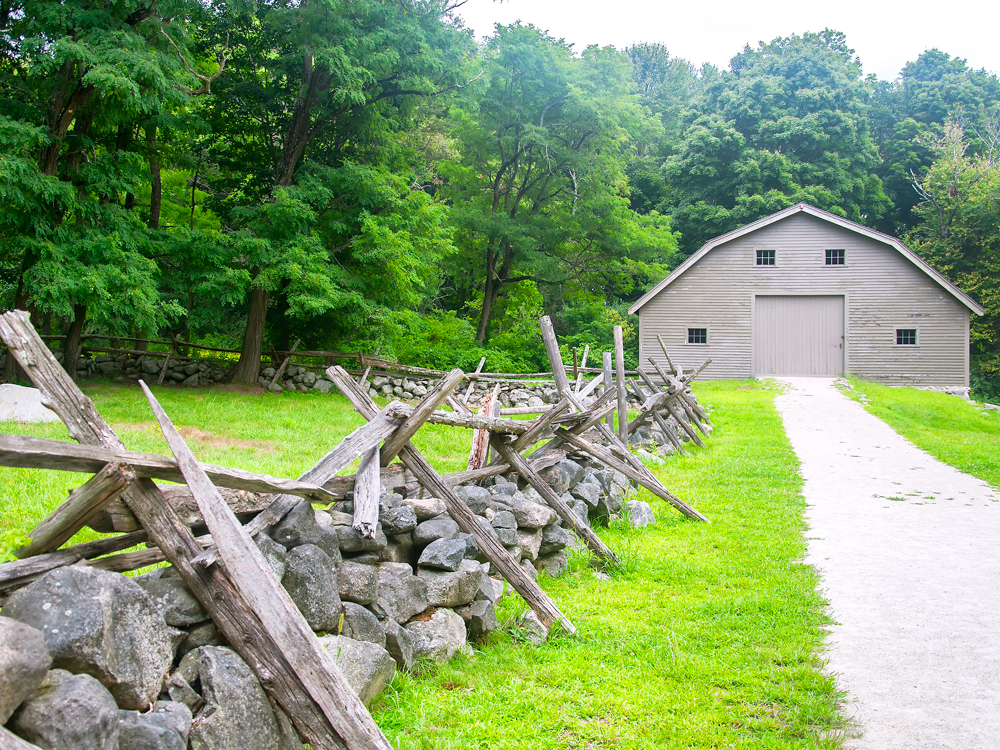
Fieldstone walls are found all throughout New England, but some are especially noteworthy. The earliest stone wall to be documented dates from 1607. It was built at the mouth of the Kennebec River (then the Sagadahoc River) north of Portland, Maine, near present-day Phippsburg. In the early 1600s, English settlers attempted to establish a permanent settlement here, known as the Popham Colony, but it was short-lived and abandoned in 1608. Samuel Maverick, an Englishman who visited in the 1620s, reported seeing “some old walls,” though no tangible evidence of the original walls remains today.
One of the most famous stone walls you can see in New England is located on Frost Farm in Derry, New Hampshire. This was the home of poet Robert Frost, who penned a work called “The Mending Wall,” which was published in his 1914 anthology North of Boston. A line that’s often quoted — “Good fences make good neighbors” — plays with the idea that walls and boundaries both join and separate us.
Meanwhile, the stone walls in Concord, Massachusetts, are wrapped up in the birth of an independent nation. North Bridge was the site of a significant battle during the American Revolutionary War. Now preserved as part of Minute Man National Historical Park, its agricultural stone walls would have provided much-needed cover for colonial fighters as they fended off the British in April 1775.
Another site of historic interest is Randall’s Ordinary in North Stonington, Connecticut. This homestead was built in 1685 and formed part of the National Underground Railroad Network. It offered a safe haven to enslaved peoples, who hid in the cellar and rested before continuing north to freedom in Canada. Within the grounds, you can find examples of lace walls, which are unusual dry-stacked structures with deliberate gaps between the stones. It’s not currently open to the public, but there are hopes to restore the site.
Where To Find Stone Walls Elsewhere in the U.S.
Though New England is most famous for its stone walls, there are many other parts of the U.S. in which you’ll find them.
Pennsylvania

In northeastern Pennsylvania’s Wayne County, stone walls indicate where there was once agriculture, even if the land use has since changed. Around 200 years ago, stones scattered about the fields would have made tasks like plowing more difficult, so piling them up to demarcate boundaries made sense. At the start of spring, farmers would use a “stone boat” to gather loose rocks and simply pile them on top of the existing wall. You’ll also see them in Woodbourne Forest and Wildlife Preserve farther west near Montrose.
Kentucky
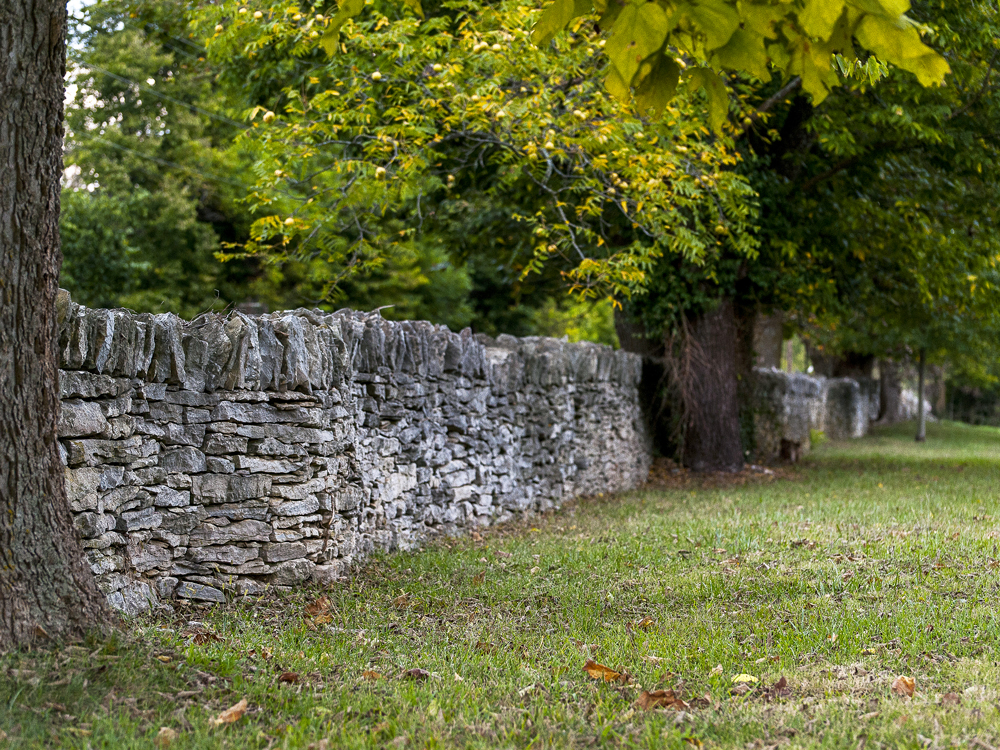
Walls made out of chunks of limestone characterize much of the Bluegrass region of Kentucky. Irish and Scottish immigrants, some of them skilled stonemasons, built these walls approximately 200 years ago. Later, they were constructed by indentured servants and enslaved peoples. The walls lined turnpikes and enclosed farms, mills, and cemeteries. The Dry Stone Conservancy in Lexington helps preserve and promote the craft for all to appreciate today.
Virginia

Stone walls are also a common sight in Augusta County, close to the Blue Ridge Parkway in western Virginia. In this area, they are what remains of the structures built to contain or separate grazing cattle and hogs that would sniff around for acorns and chestnuts. Measuring up to 6 feet thick and as high as a human chest, they stretch for miles through leafy deciduous forest. Stone walls also line the road in Upperville, Virginia, nestled in the foothills of the Piedmont.
More from our network
Daily Passport is part of Inbox Studio, which publishes content that uplifts, informs, and inspires.






